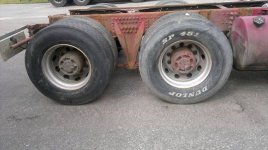RalphVa
Super Member
- Joined
- Dec 19, 2003
- Messages
- 7,882
- Location
- Charlottesville, VA, USA
- Tractor
- JD 2025R, previously Gravely 5650 & JD 4010 & JD 1025R
Why do pickup trucks have such huge differentials?
The ones on Subarus are small. The one on our Miata is small, and its final drive ratio is 4.1. Same for our 1983 240D Benz. It was basically the same drive with independent rear axles as the Miata and Subaru have.
Why are pickup trucks (and the big truck's) differentials so large?
Ralph
The ones on Subarus are small. The one on our Miata is small, and its final drive ratio is 4.1. Same for our 1983 240D Benz. It was basically the same drive with independent rear axles as the Miata and Subaru have.
Why are pickup trucks (and the big truck's) differentials so large?
Ralph
